Brian Garth Ebel
age ~59
from Owings Mills, MD
- Also known as:
-
- Brian G Ebel
- Brian Ellis
- Braing Ebel
Brian Ebel Phones & Addresses
- Owings Mills, MD
- 920 Rolandvue Rd, Towson, MD 21204
- 3412 Odonnell St, Baltimore, MD 21224
- Saint Paul, MN
- 11100 Pool Rd, Cockeysville, MD 21030 • 4108128880
- Sparks Glencoe, MD
- Reisterstown, MD
- Saint Petersburg, FL
- 100 Hunts Bluff Rd, Sparks Glencoe, MD 21152
Us Patents
-
Foot Pad For Relieving Pain
view source -
US Patent:8230620, Jul 31, 2012
-
Filed:Feb 26, 2009
-
Appl. No.:12/379690
-
Inventors:Brian Ebel - Towson MD, US
-
International Classification:A43B 7/14
-
US Classification:36 91, 36145, 36173
-
Abstract:A foot pad for relieving pain while engaging in weight bearing activity is provided. A pad can include an arch portion fitting under and adjacent to the medial longitudinal arch of the foot, offsetting the soft tissue of the medial longitudinal arch thereby supporting the calcaneo-navicular ligament structure, wherein the arch portion extends from front to rear, of the longitudinal medial arch, and the arch portion extends from the medial side towards the lateral side, of the longitudinal medial arch. Furthermore, the pad can provide a heel portion of the pad fitting under the heel of the foot, the heel portion connecting a medial side portion of the pad to a lateral side portion of the pad, cushioning and reduces soreness and pressure from the sole of the foot by offsetting the soft tissue of the medial longitudinal arch, thereby supporting the calcaneo-navicular ligament structure reducing over-pronation and increasing supination of the foot during weight bearing activity, offsetting and cushioning the soft tissue of the outer portions of sole of the heel and offsetting the central portion of the heel from the surface immediately below the pad at a distance of approximately the thickness of the pad, during weight bearing activity.
Resumes

Research Hydrologist At The U.s Geological Survey
view sourceLocation:
920 Rolandvue Rd, Towson, MD 21204
Industry:
Environmental Services
Work:
U.s. Geological Survey (Usgs)
Research Hydrologist at the U.s Geological Survey
Colorado School of Mines Nov 2013 - Jul 2014
Research Assistant Professor
University of Colorado Boulder Oct 2012 - Oct 2013
Cires Visiting Fellow
U.s. Geological Survey (Usgs) Mar 2010 - Oct 2012
Mendenhall Postdoctoral Fellow
U.s. Geological Survey (Usgs) Feb 2008 - Mar 2010
Hydrologist
Research Hydrologist at the U.s Geological Survey
Colorado School of Mines Nov 2013 - Jul 2014
Research Assistant Professor
University of Colorado Boulder Oct 2012 - Oct 2013
Cires Visiting Fellow
U.s. Geological Survey (Usgs) Mar 2010 - Oct 2012
Mendenhall Postdoctoral Fellow
U.s. Geological Survey (Usgs) Feb 2008 - Mar 2010
Hydrologist
Education:
Stanford University 2001 - 2007
Doctorates, Doctor of Philosophy Washington University In St. Louis 1997 - 2001
Bachelors, Bachelor of Arts
Doctorates, Doctor of Philosophy Washington University In St. Louis 1997 - 2001
Bachelors, Bachelor of Arts
Skills:
Hydrology
Groundwater
Modeling
Groundwater Modeling
Hydrogeology
Hydrologic Modeling
Geomorphology
Science
Slope Stability
Data Analysis
Matlab
Scientific Writing
Sediment Transport
Numerical Analysis
Geology
Environmental Science
Field Work
Slope Stability Analysis
Groundwater Contamination
Report Writing
University Teaching
Proposal Writing
Groundwater
Modeling
Groundwater Modeling
Hydrogeology
Hydrologic Modeling
Geomorphology
Science
Slope Stability
Data Analysis
Matlab
Scientific Writing
Sediment Transport
Numerical Analysis
Geology
Environmental Science
Field Work
Slope Stability Analysis
Groundwater Contamination
Report Writing
University Teaching
Proposal Writing

Athletic Trainer
view sourceLocation:
920 Rolandvue Ave, Towson, MD
Industry:
Sports
Work:
Baltimore Orioles
Athletic Trainer
Athletic Trainer

Brian Ebel
view sourceLicense Records
Brian G Ebel
Address:
333 W Camden St, Baltimore, MD
Phone:
4105476226
License #:
1356 - Active
Category:
Health Care
Issued Date:
Mar 12, 2002
Effective Date:
Oct 8, 2012
Expiration Date:
Sep 30, 2018
Type:
Athletic Trainer
Googleplus

Brian Ebel
Education:
Champions School of Real Estate - Real Estate
Tagline:
Well, you know..
News

California Fire Survivors Brace for Debris-Filled Mudslides
view source- The problem is a fundamental change to the soil itself. When a wildfire burns vegetation, it releases organic compounds. These compounds are heated in the fire, volatilize, and then re-condense on soil particles, says Brian Ebel, a hydrologist with the USGS.
- Date: Nov 20, 2018
- Category: Headlines
- Source: Google
Youtube
Myspace
Flickr
Classmates

Brian Ebel
view sourceSchools:
Washakie High School Worland WY 1980-1984
Community:
Steven Johnson, Anita Williams, Dale Horkey, Sally Clevenger, Linda Chamberlain

Brian Ebel
view sourceSchools:
Burroughs High School St. Louis MO 1993-1997
Community:
Jeffrey Toce, Seema Mukhi, Patty Roj, Daniel Tsai, Jon Wiswall, David Desloge, Lauren Phillips, Kevin Barton, Matthias Kinzler, Leoma Ball

Brian Ebel | Quartz Hill ...
view source
Colorado State University...
view sourceGraduates:
Brian Ebel (1985-1990),
Daniel Youngs (1975-1982),
John Neville (1972-1977),
Tracey Williams (1990-1993),
John Tobey (1975-1981),
Peter Haub (1965-1970)
Daniel Youngs (1975-1982),
John Neville (1972-1977),
Tracey Williams (1990-1993),
John Tobey (1975-1981),
Peter Haub (1965-1970)

John Burroughs High Schoo...
view sourceGraduates:
Brian Ebel (1993-1997),
Jenny Kim (1987-1991),
Eliza Rubenstein (1987-1991),
Lilly Schonwald (1992-1996),
Eddie Williamson (1987-1991)
Jenny Kim (1987-1991),
Eliza Rubenstein (1987-1991),
Lilly Schonwald (1992-1996),
Eddie Williamson (1987-1991)

Lyndon State College, Lyn...
view sourceGraduates:
Marc Dole (1988-1992),
Brian Ebel (1997-2001),
Timothy Carlough (2005-2009)
Brian Ebel (1997-2001),
Timothy Carlough (2005-2009)

Quartz Hill High School, ...
view sourceGraduates:
Brian Ebel (1992-1996),
Antoinette washington (1997-2001),
Yvonne Secretan (1969-1973),
robert wiebe (1973-1977)
Antoinette washington (1997-2001),
Yvonne Secretan (1969-1973),
robert wiebe (1973-1977)
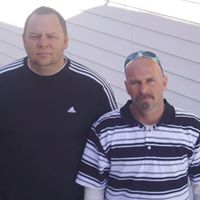
Brian Ebel
view source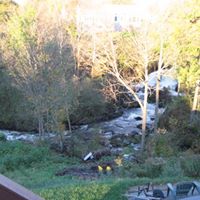
Brian Ebel
view source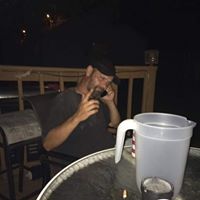
Brian Ebel
view source
Brian Ebel
view source
Brian Ebel
view source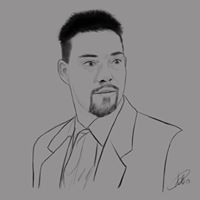
Brian Ebel
view source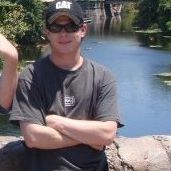
Brian Ebel
view source
Brian Ebel
view sourceGet Report for Brian Garth Ebel from Owings Mills, MD, age ~59















